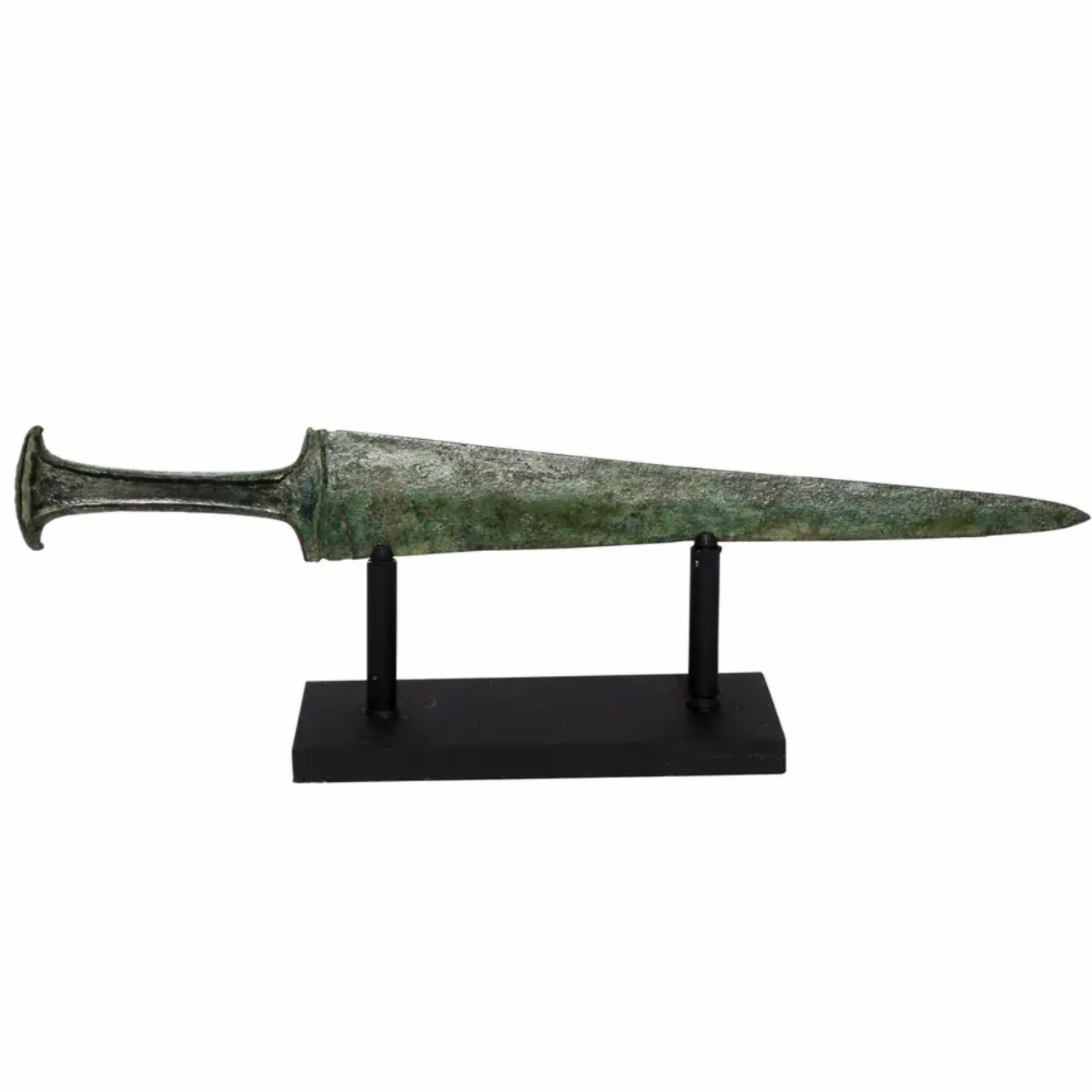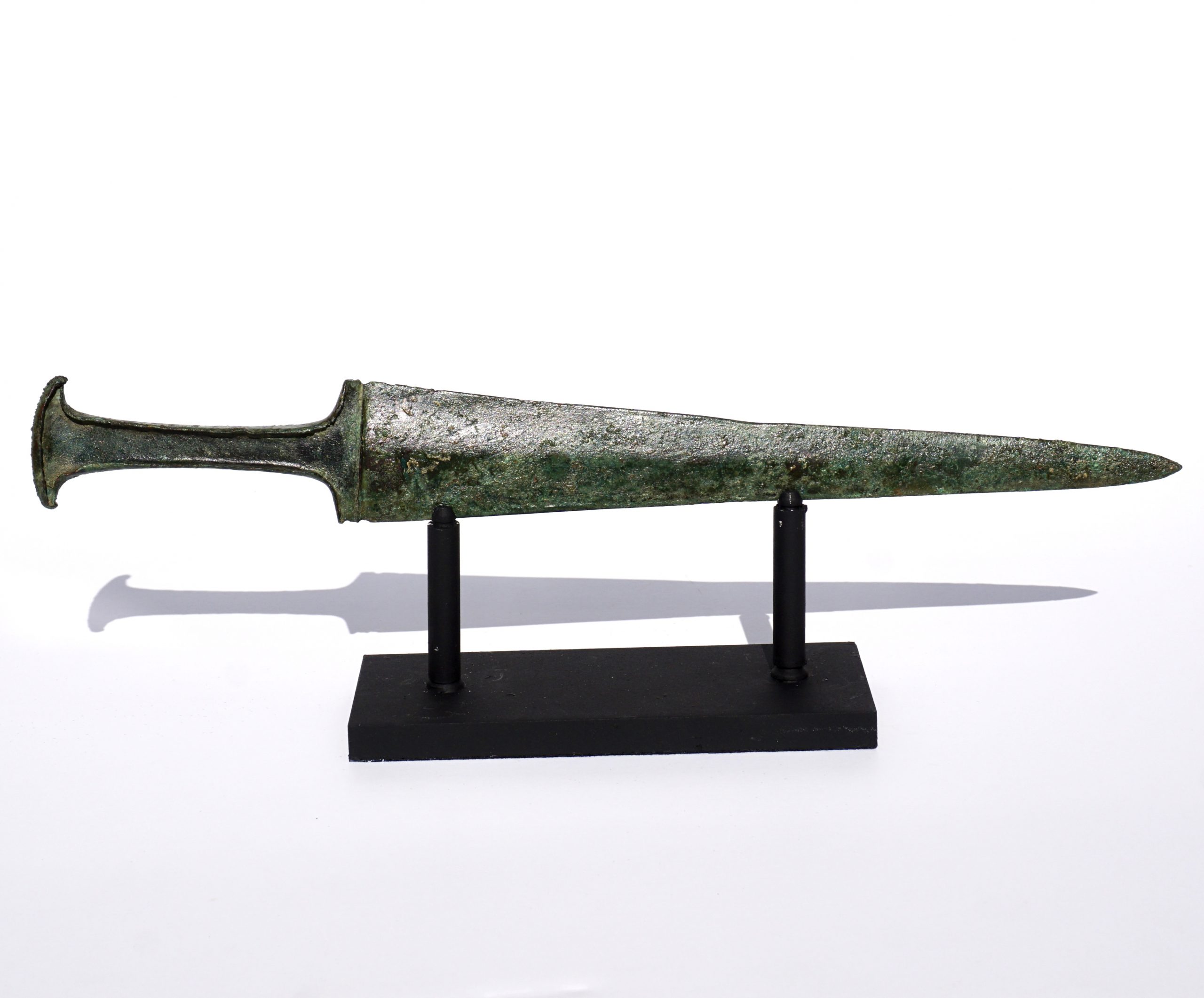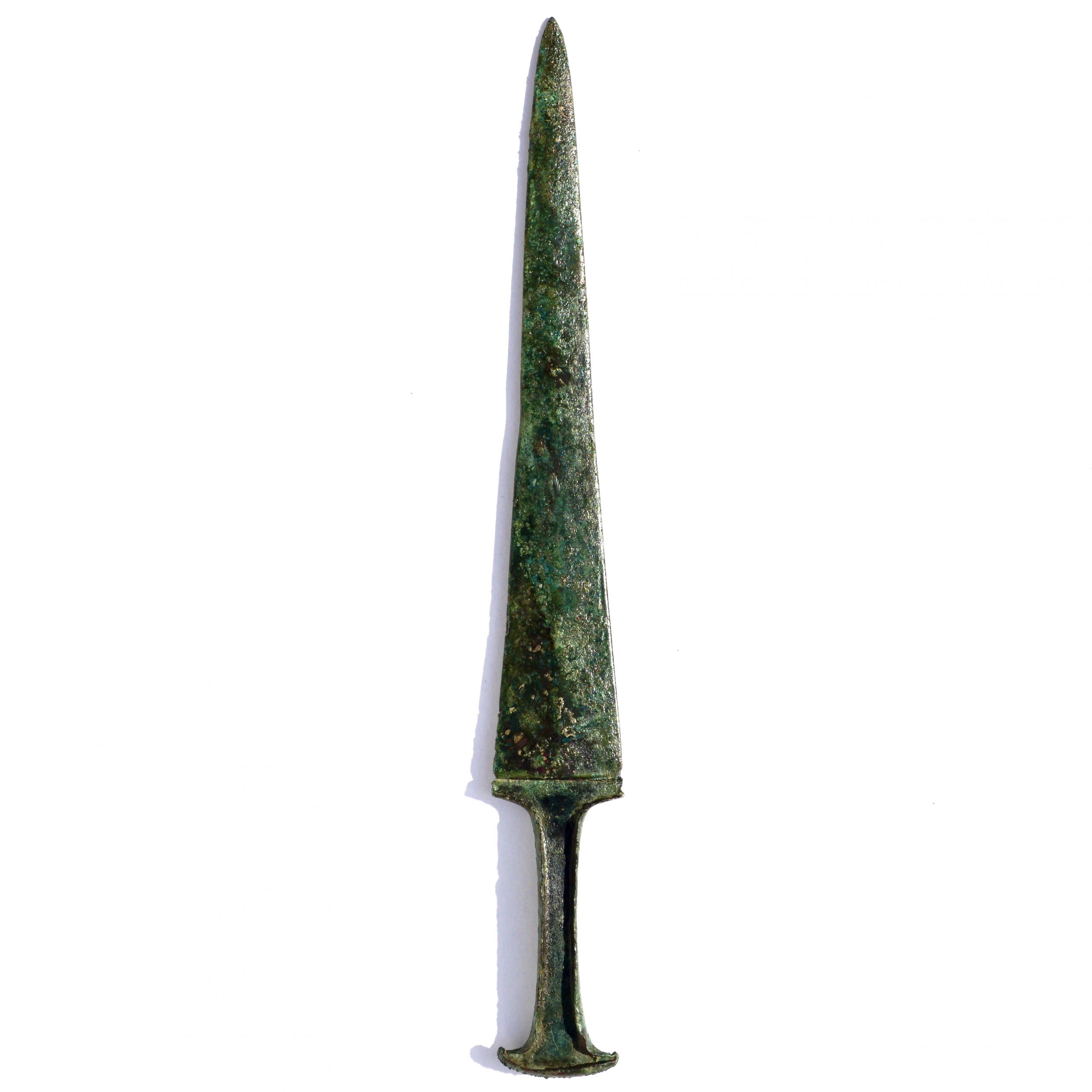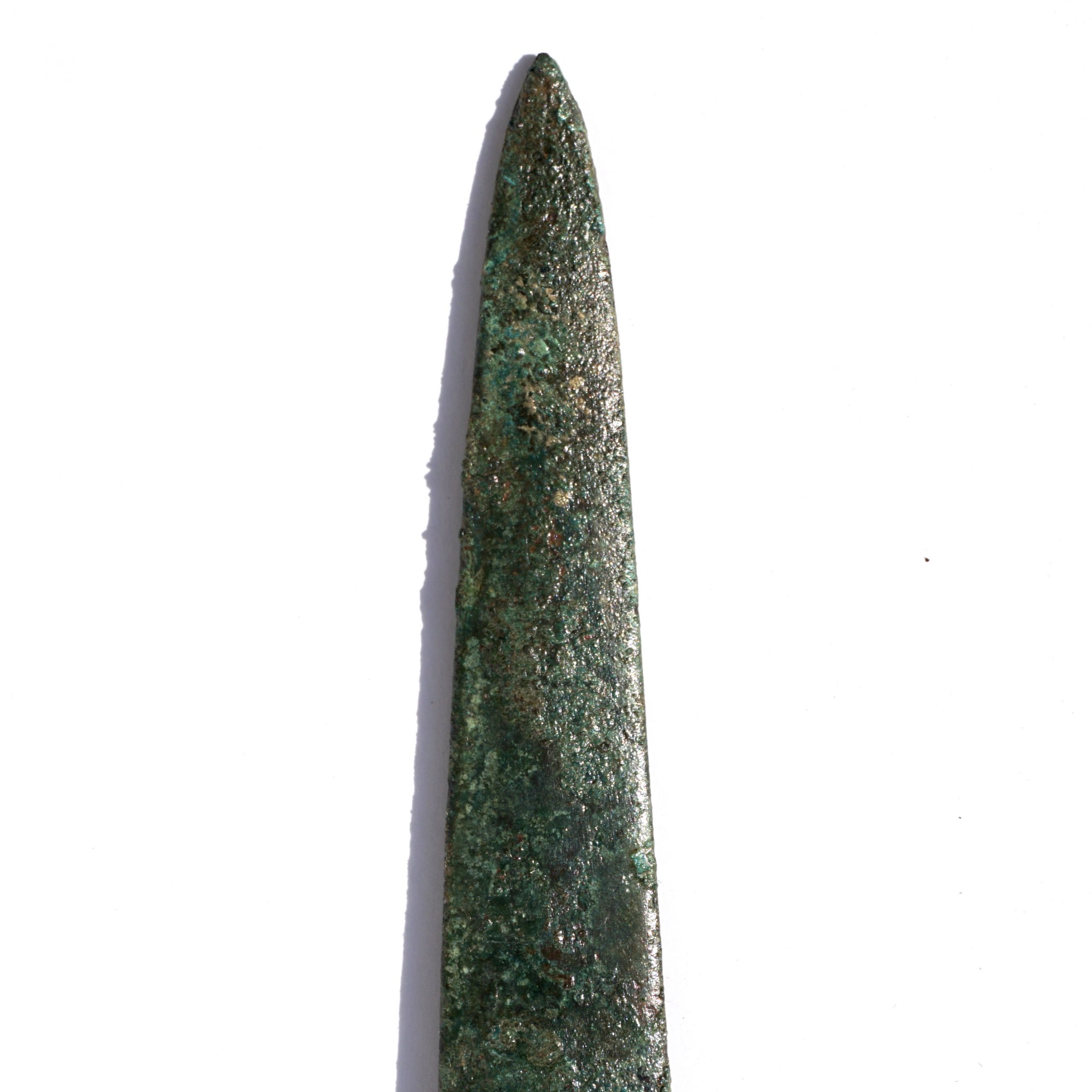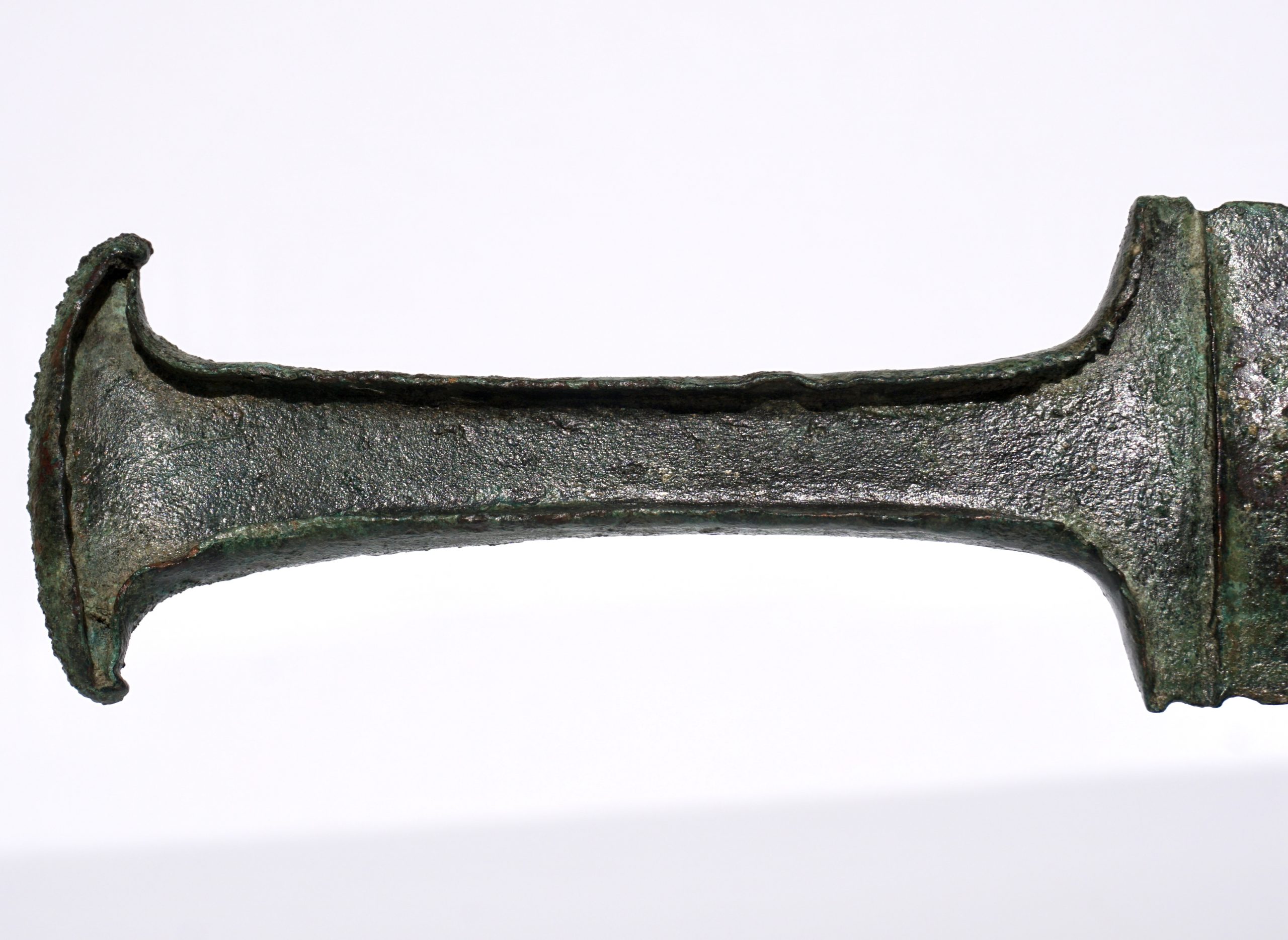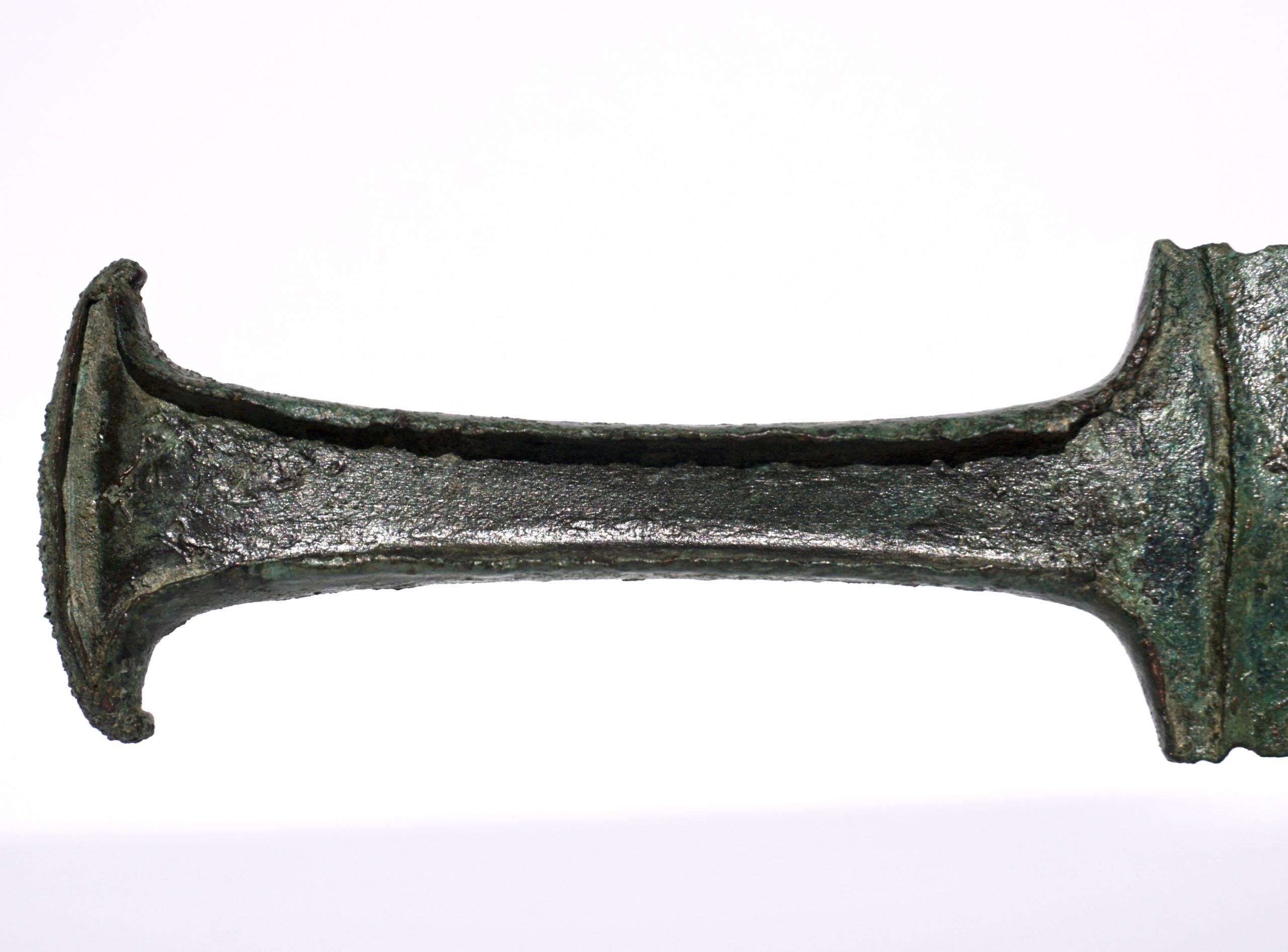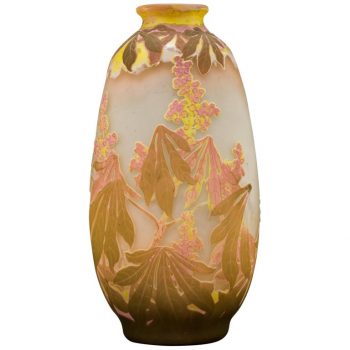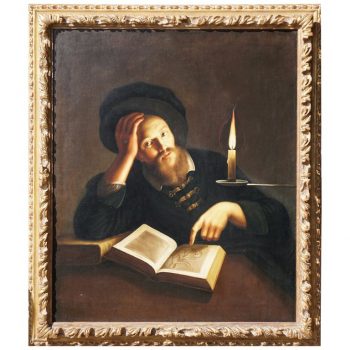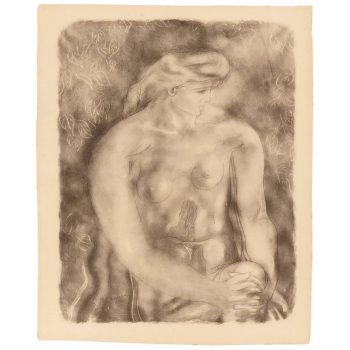Description
2000-700 BC. Luristan (Louiristan) Culture.
Bronze dagger with a bevelled leaf-shaped blade and wrap-around handle culminating in an oval-shaped pommel. The handle would originally have been reinforced with a wooden insert. Bronze weaponry production flourished from the 2nd millennium BC to about 700 BC when it was gradually replaced by iron. Swords, spears and arrows were exchanged via trade and war and are discovered in both civic and ritual context. A sword such as this one would have been an important symbol of rank, and power beyond the means of most common Luristani soldiers.
Superb condition; on a custom-made stand.
Provenance: From the private collection of D. Ruskin, Oxfordshire; formerly in a British collection formed before 2000 on the UK / International art markets. A COA will be provided by Pax Romana Ltd. London
Length: 14.25 Inches. Width: 1.25 Inches, Depth: .5 Inches
Luristan bronzes (rarely “Lorestan”, “Lorestani” etc. in sources in English) are small cast objects decorated with bronze sculptures from the Early Iron Age which have been found in large numbers in Lorestan Province and Kermanshah in western Iran. They include a great number of ornaments, tools, weapons, horse-fittings and a smaller number of vessels including situlae, and those found in recorded excavations are generally found in burials. The ethnicity of the people who created them remains unclear, though they may well have been Persian, possibly related to the modern Lur people who have given their name to the area. They probably date to between about 1000 and 650 BC.


